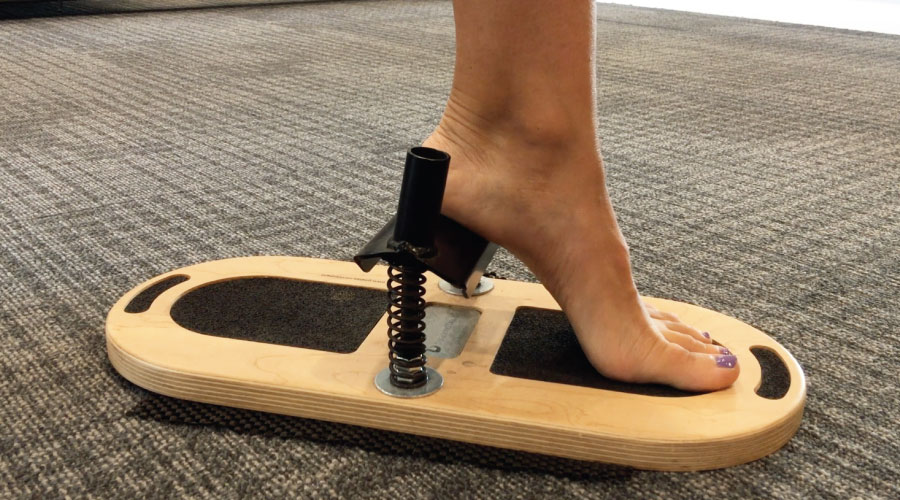The Plantar fascia is a crucial length of tissue playing an important role in foot structure and biomechanics in weight bearing. Plantar fasciitis or Plantar Fasciopathy results from repetitive excessive tensile loading of the plantar fascia that can gradually build up over a long period of time or arise from a sudden increase in weight-bearing activities.
This can occur both within the athletic population such as long distance runners and dancers, however, obesity is also a risk factor due to increased load through the foot with comparably less activity. The pathophysiology of plantar fasciitis is similar to tendinopathy with evidence of collagen disarray in the absence of inflammation, increasing the thickness of the tissue and regional loading during gait.
What are the symptoms and who is the most touch?
The incidence and prevalence of plantar fasciitis are unclear. However, it has been estimated that 7% of people aged over 65 years report tenderness in the region of the heel and that in the USA plantar heel pain accounts for a quarter of all foot injuries relating to running. Over 1 million people per year in the USA present to their Doctor for the treatment and diagnosis of Plantar heel pain. The condition affects both athletic and sedentary people and does not seem to be influenced by gender.
A recent review into the clinical practice guidelines for Plantar Fasciitis stated patients are likely to present with the following:
- Plantar medial heel pain, worse in weight bearing, especially initial steps after periods of inactivity, as well as prolonged activity in weight bearing
- Sudden increase in long-term weight bearing activities especially on a surface with minimal shock absorption
- High body mass index (non-athletic population)
- Tenderness/pain on palpation of the proximal attachment of the plantar fascia
- Positive windlass test
- Decreased active/passive dorsiflexion range of motion
- Decreased longitudinal foot arch height
The most notable risk factors for the development of plantar fasciitis are decreased ankle dorsiflexion range, a high percentage of their daily activities/work on their feet and a BMI greater than 30kg/m2.
What treatment for Plantar Fasciitis?
Plantar Fasciitis is commonly described as a self-limiting condition. A systematic review, in which heal pain resolved within 12 months regardless of treatment strongly supports this. However, clinically plantar Fasciitis is a painful, disabling condition which severely impacts the quality of life.
Ultrasound-guided corticosteroid injection for Plantar Fasciitis is increasingly popular in the medical treatment of plantar fasciitis. Studies show that ultrasound-guided corticosteroid injection reduces abnormal swelling and pain however significant pain relief did not last longer than four weeks. Some studies are showing that corticosteroid injections do cause degenerative effects for tissue in animal studies if used more than once.
Physiotherapy treatment of plantar fasciitis is dependent on its acuteness or chronicity and level of pain/discomfort but is generally directed at decreasing tensile load on the plantar fascia, increasing foot and ankle mobility, pain management and activity/lifestyle modification.
Physiotherapy treatments include:
- Education on activity modification
- Deloading by anti-pronation taping or foot orthoses (either over the counter or customised), along with shock absorbing footwear and gel heel inserts
- Increasing the extensibility of the musculotendinous units and associated connective tissue of the plantar fascia;
– Soft tissue release of gastrocnemius, soleus, toe flexors, tibialis posterior, plantar fascia itself using dry needling and trigger point therapy. Dry needling provided statistically significant reductions in plantar heel pain.
– Mobilisations of talocrural joint, inferior tibiofibular joint, - Addressing biomechanics of aggravating activities
In addition to rehabilitation exercises, Pilates can be used effectively to increase the extensibility of the musculotendinous units and soft tissue along with mobilization for the talocrural and tibiofibular joints. Pilates can address poor biomechanics and establish new movement patterns in a non-weight bearing environment making it an ideal choice of exercise to rehabilitate plantar fasciitis, in addition to a home management program.
At The Body Refinery, our physiotherapists are extensively trained in Pilates and dry needling, along with the traditional musculoskeletal physiotherapy skills making them an ideal choice to rehabilitate plantar fasciitis.
_ _ _
Book an appointment with one of The Body Refinery’s Physiotherapists today on 07 3358 3915 or at info@thebodyrefinery.com.au
Follow us on Facebook, Instagram and Twitter for a daily dose of Pilates and Wellbeing.



